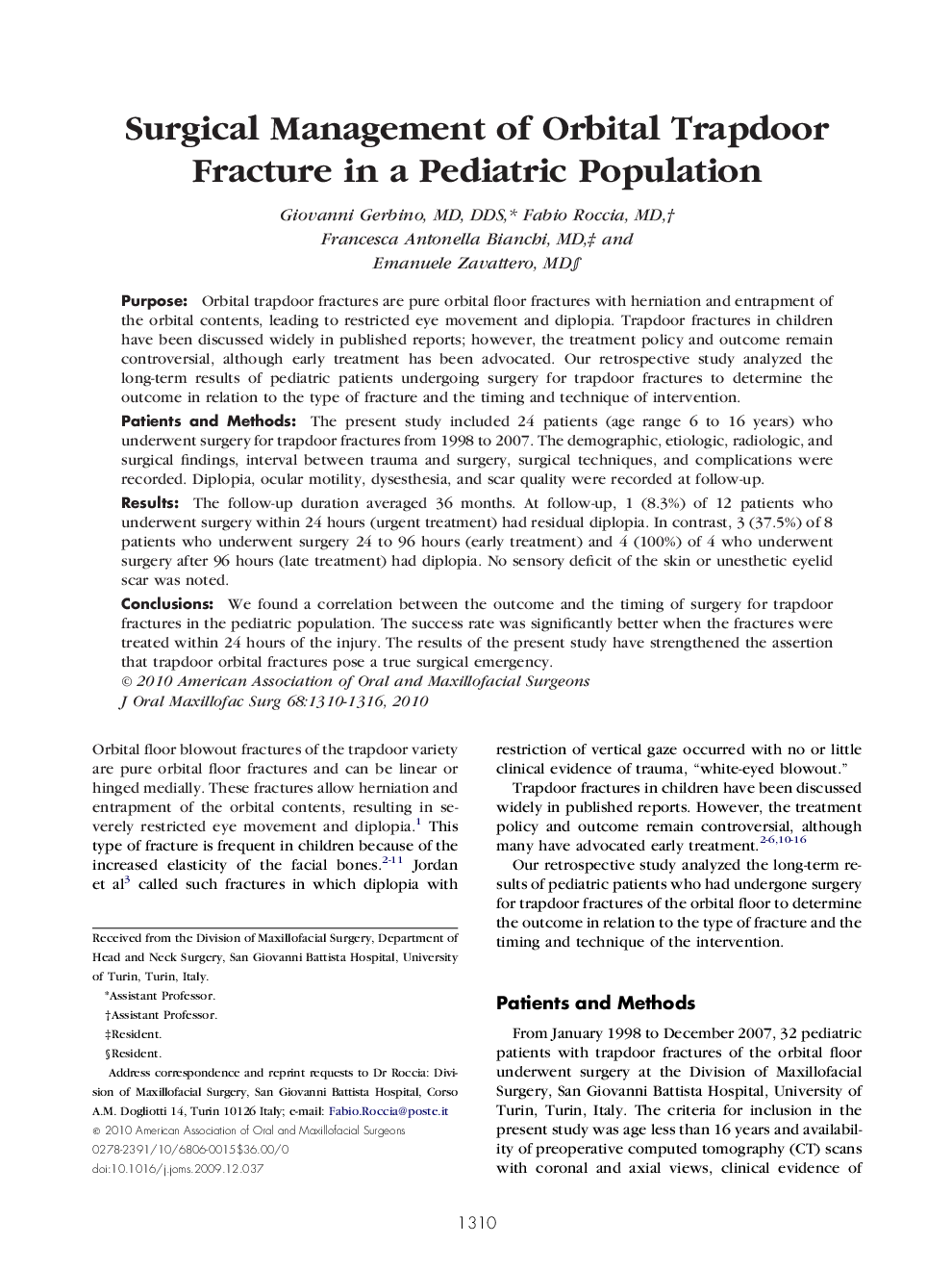| Article ID | Journal | Published Year | Pages | File Type |
|---|---|---|---|---|
| 3157128 | Journal of Oral and Maxillofacial Surgery | 2010 | 7 Pages |
PurposeOrbital trapdoor fractures are pure orbital floor fractures with herniation and entrapment of the orbital contents, leading to restricted eye movement and diplopia. Trapdoor fractures in children have been discussed widely in published reports; however, the treatment policy and outcome remain controversial, although early treatment has been advocated. Our retrospective study analyzed the long-term results of pediatric patients undergoing surgery for trapdoor fractures to determine the outcome in relation to the type of fracture and the timing and technique of intervention.Patients and MethodsThe present study included 24 patients (age range 6 to 16 years) who underwent surgery for trapdoor fractures from 1998 to 2007. The demographic, etiologic, radiologic, and surgical findings, interval between trauma and surgery, surgical techniques, and complications were recorded. Diplopia, ocular motility, dysesthesia, and scar quality were recorded at follow-up.ResultsThe follow-up duration averaged 36 months. At follow-up, 1 (8.3%) of 12 patients who underwent surgery within 24 hours (urgent treatment) had residual diplopia. In contrast, 3 (37.5%) of 8 patients who underwent surgery 24 to 96 hours (early treatment) and 4 (100%) of 4 who underwent surgery after 96 hours (late treatment) had diplopia. No sensory deficit of the skin or unesthetic eyelid scar was noted.ConclusionsWe found a correlation between the outcome and the timing of surgery for trapdoor fractures in the pediatric population. The success rate was significantly better when the fractures were treated within 24 hours of the injury. The results of the present study have strengthened the assertion that trapdoor orbital fractures pose a true surgical emergency.
